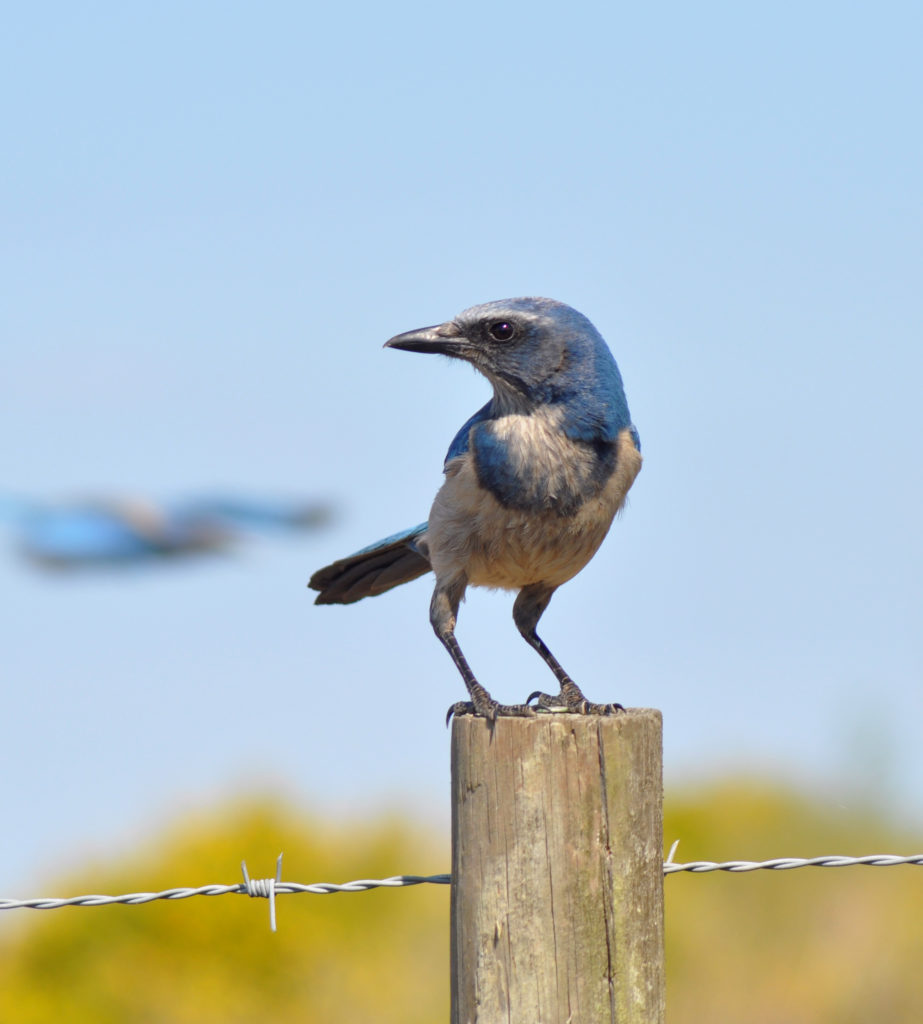Ithaca, N.Y.—The Land Trust Bird Conservation Initiative has awarded six new grants to support a variety of conservation projects benefiting birds and other species that live in habitats across the country, from grassland, to scrub, forest, and prairie. The Land Trust Bird Conservation Initiative was formed in 2013 by the Cornell Lab of Ornithology and the Land Trust Alliance.
“We’re grateful to the March Conservation Fund for partnering with the Land Trust Initiative,” says Sara Barker, leader of the initiative at the Cornell Lab. “Their support means we can now fund more worthy projects at a higher level and make a greater contribution to private land conservation.”
In the third year of the program, the Cornell Lab received more than 100 proposals for the grants, which were established specifically to bring attention to strategic conservation for birds on private lands. Loss of habitat is one of the most severe threats that birds face and land trusts contribute greatly to protecting and managing important habitats.
“The breadth of the funded projects illustrates well the important role that land trusts play in conserving some of our most threatened or vulnerable ecosystems and species, many of which occur on private land,” says Amanda Rodewald, senior director of conservation science at the Cornell Lab.
Details for each of the funded land trust projects:
Oregon Vesper Sparrow nest. Photo courtesy of Center for Natural Lands Management. |
Center for Natural Lands Management (Washington) $20,000
The Center for Natural Lands Management will use its grant to manage a 1,600-acre conservation easement of intact prairie habitat in the Willamette Valley in Oregon to protect the rapidly dwindling Oregon Vesper Sparrow population. Programs for conservation partners and private landowners will demonstrate the effective use of grazing as a habitat management tool. Monitoring the sparrow population with the Cornell Lab’s eBird online reporting program will help track changes in Vesper Sparrow abundance and distribution and help guide future management actions.
Florida Scrub-Jay by Louise Hunt. |
Conservation Foundation of the Gulf Coast (Florida) $20,000
The Conservation Foundation of the Gulf Coast is working in southwest Florida to save the rare Florida scrub habitat and one of the world’s most charismatic and interesting birds, the Florida Scrub-Jay. Within a 38-acre parcel, the foundation will perform mechanical fuel reduction and burns to create scrub-jay habitat within an essential dispersal area and corridor between two major jay populations. Trails will also be created for public education, bird monitoring, and recreation.
Prescribed grassland burn. Courtesy Mississippi Valley Conservancy. |
Mississippi Valley Conservancy (Wisconsin) $20,000
With its partners, the Mississippi Valley Conservancy is spearheading the Kickapoo Bird Habitat Initiative within the Kickapoo Valley–Wildcat Mountain Important Bird Area. This collaborative effort will connect landowners with cost-sharing opportunities for habitat management, conduct management in forests and grasslands, utilize demonstration sites and workshops to teach management techniques, and use eBird to track bird community response. Ultimately the project will connect habitat for bird species of greatest conservation need that require large blocks of contiguous forest and grassland.
Southern Appalachian Highlands Conservancy (North Carolina) $20,000
The Southern Appalachian Highlands Conservancy will manage globally endangered red spruce–Fraser fir “sky islands” and rapidly declining shortleaf pine habitats in the southern Appalachians. These habitats support some of the rarest species in the region, including Northern Saw-whet Owl, Blackburnian Warbler, Red Crossbill, Brown-headed Nuthatch, and Northern Bobwhite. Workshops will demonstrate the use of low cost, minimal impact forestry practices and include species monitoring through the eBird program. This project will serve as a teaching tool for private landowners and conservation practitioners interested in the restoration of rare and declining conifer habitats.
York Prairie State Natural Area, Wisconsin. Photo by Cathy Bleser. |
Driftless Area Land Conservancy (Wisconsin) $5,000
The Driftless Area Land Conservancy, with support from the Madison Audubon Society, will implement a “Landowners Matter” campaign to identify landowner values, motivations, and barriers to conservation within two high priority Grassland Bird Conservation Areas. Information gathered will be developed into a series of interactive educational events emphasizing the interconnectedness of grasslands, grassland birds, and the Driftless landscape, and a series of evening events for local communities. The campaign will also help build Southwest Wisconsin Grasslands Network‘s capacity to implement regional grassland conservation with land trusts and conservation groups.
Birding a grassland in the Piedmont Ecoregion of South Carolina. Photo courtesy of Upstate Forever. |
Upstate Forever (South Carolina) $5,000
Upstate Forever and its partners plan to work with local birding clubs, using the eBird program to establish baseline data for grassland birds on two distinctive conservation easements, a nature park and a city landfill. Wildlife biology students at Clemson University will research current regional management practices, with results used to create a condensed guide for land trust partners and landowners presenting the best management practices to restore and improve grassland bird habitats while meeting landowner needs. An outreach program will be developed to share the project story and educate partners.
Another round of grants from the Cornell Lab through the Land Trust Bird Conservation Initiative will be available next year, with proposals due in February or March 2020. To learn more about each of the projects above and to find out how to apply for a grant, visit the initiative website at birdtrust.org.
Download images to use with this story.
scraped from https://www.newswise.com/articles/grants-awarded-to-land-trusts-for-bird-conservation
